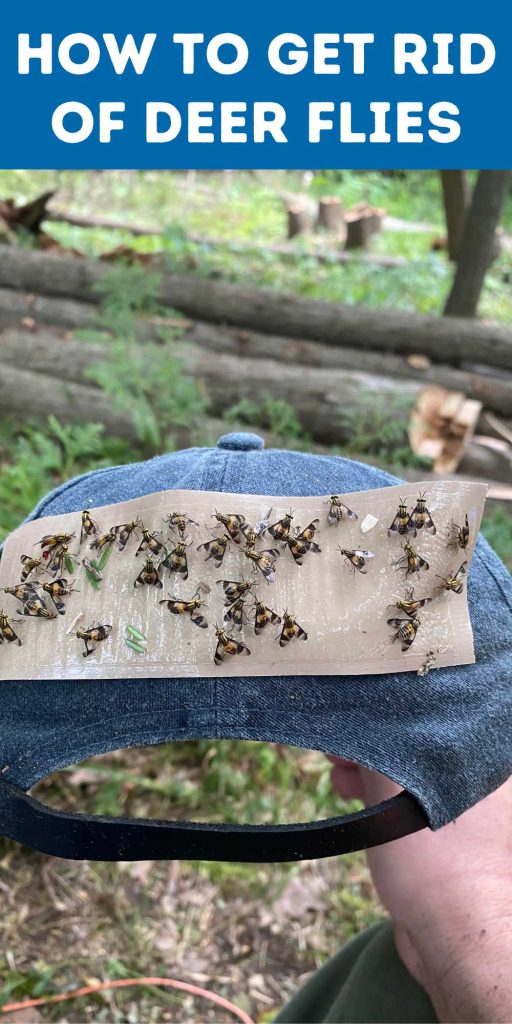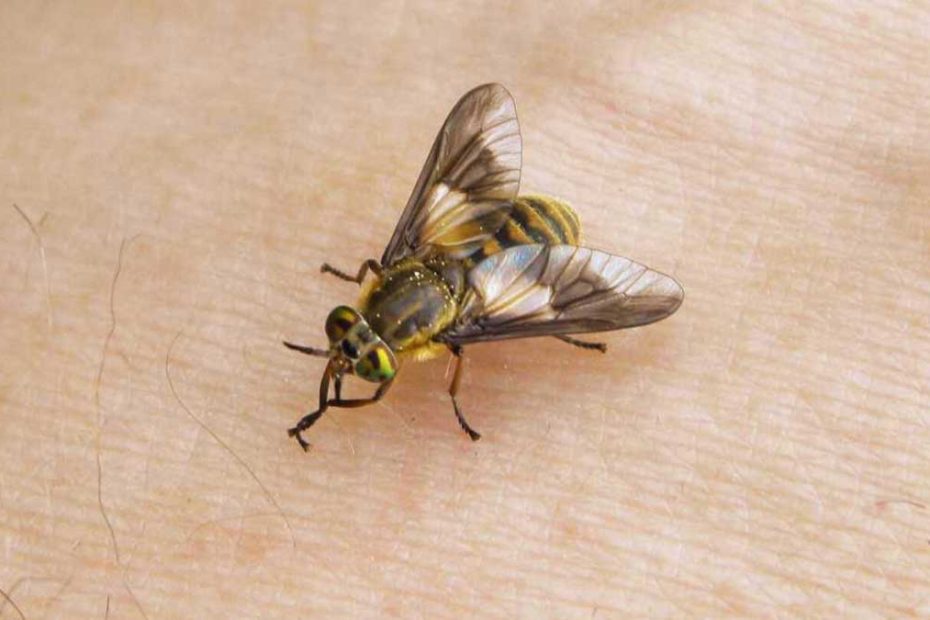Deer flies can turn a peaceful outdoor experience into a swatting frenzy. These persistent pests are not just annoying; their bites can cause painful, itchy welts. If you’re tired of dodging these relentless insects, it’s time to take action and reclaim your outdoor space.
Understanding what attracts deer flies and how they operate is key to effectively eliminating them. By implementing a few strategic measures, you can significantly reduce their presence and enjoy the outdoors without constantly looking over your shoulder.
Key Takeaways
- Understanding Deer Flies: Knowing their appearance, behavior, lifecycle, and what attracts deer flies is key to eliminating them effectively.
- Deer Fly Prevention Tips: Wear light-colored and protective clothing, use head nets, and set up physical barriers like screens and outdoor fans to deter deer flies.
- Natural Repellents: Utilize essential oils like lemon eucalyptus, lavender, cedarwood, and peppermint, or create homemade sprays with vinegar, herbs, or citrus to avoid synthetic chemicals.
- Chemical Solutions: Use chemical repellents such as DEET, permethrin, pyrethrin-based sprays, and bifenthrin by following safe application methods and manufacturer guidelines.
- Professional Pest Control: For severe or persistent infestations, consider hiring professional pest control services to ensure comprehensive and effective solutions tailored to your needs.

Understanding Deer Flies
Understanding deer flies is crucial to effectively manage their presence. Deer flies are pests best known for their painful bites. Here’s a breakdown to help you comprehend these annoying insects better.
Common Characteristics:
- Appearance: Deer flies have patterned wings and bright eyes. They are larger than houseflies, typically measuring around 6-12 mm in length.
- Lifecycle: You’ll find that deer flies undergo a complete metamorphosis, including egg, larva, pupa, and adult stages.
Behavior Patterns:
- Activity Period: Deer flies are most active during daylight hours, especially in warm, humid environments.
- Breeding Grounds: These flies prefer to lay eggs in moist environments like marshes, ponds, and streams. The larvae develop in moist soil near these water bodies.
Feeding Habits:
- Diet: Female deer flies are hematophagous, meaning they need blood meals to reproduce. They target mammals, including humans, for their blood.
- Attractants: These flies are attracted to movement, warmth, and carbon dioxide. Dark clothing and scents from personal care products can also lure them.
- Protective Clothing: Wear light-colored, long-sleeved shirts and pants to reduce exposed skin.
- Environmental Control: Reduce standing water around your property to minimize breeding sites.
Understanding these aspects of deer flies’ life cycle and behavior helps in creating an effective strategy to reduce their nuisance. Proper knowledge equips you with the information needed to reclaim your outdoor spaces.
Deer Fly Prevention Tips
Dealing with deer flies can be frustrating, but strategic planning can help reduce their impact. Following key practices ensures a more enjoyable outdoor experience.
Choosing the Right Clothing
Wearing suitable attire can significantly deter deer flies. The correct clothing choices are essential to minimize bites and discomfort. Consider the following:
- Light-colored Clothing: Deer flies are attracted to dark colors. Opt for whites, pastels, and light hues to make yourself less noticeable.
- Long-sleeved Shirts and Long Pants: Covering skin reduces the area available for bites. Select breathable fabrics like cotton or moisture-wicking synthetics for comfort.
- Hats and Head Nets: Protect your head and neck, the primary areas targeted by deer flies, with wide-brimmed hats and head nets. Ensure head nets are fine mesh to block flies effectively.
Installing Physical Barriers
Creating barriers helps keep deer flies at bay. Physical deterrents act as a shield, preventing these pests from entering your personal space. Carry out the following measures:
- Screens: Install fine-mesh screens on windows and doors to keep bugs out while allowing ventilation. Ensure there are no gaps that deer flies could exploit.
- Insect Traps: Use deer fly traps around the perimeter of your property. Some traps mimic the movement and appearance of prey, luring flies away from you.
- Fans: Set up outdoor fans on patios and decks. The steady airflow disrupts the flight paths of deer flies, preventing them from landing on you.
Taking these steps can drastically reduce the impact of deer flies. With proactive clothing choices and effective physical barriers, you can enjoy your outdoor activities with fewer interruptions.
Natural Repellents for Deer Flies
Natural repellents provide a chemical-free way to protect yourself from deer flies. Using essential oils and homemade sprays can effectively deter these pests and make outdoor activities more enjoyable.
Essential Oils
Essential oils are a popular and effective natural repellent for deer flies. Here’s how they work:
- Lemon Eucalyptus Oil: This oil contains PMD (p-Menthane-3,8-diol), which is a proven repellent. Apply diluted oil to exposed skin.
- Lavender Oil: Known for its pleasant scent, lavender oil can deter deer flies. Mix a few drops with a carrier oil.
- Cedarwood Oil: This oil works by masking the scents that attract deer flies. Use it in diffusers or mix with carrier oils.
- Peppermint Oil: With its strong aroma, peppermint oil can keep deer flies at bay. Apply it to skin or clothing.
Homemade Sprays
Creating homemade sprays can offer personalized protection against deer flies. Below are some effective recipes:
- Vinegar and Essential Oil Spray: Combine 1 cup of white vinegar with 10-15 drops of eucalyptus or lavender oil. Mix in a spray bottle and apply to clothing and skin.
- Herbal Water Spray: Steep herbs like basil, mint, or catnip in hot water. After cooling, strain the mixture and transfer to a spray bottle. Use it to mist skin and clothes.
- Citrus Spray: Blend the juice of two lemons with 2 cups of water and a teaspoon of vanilla extract. Pour into a spray bottle and apply as needed.
By integrating natural repellents into your routine, you can defend against deer flies without the use of synthetic chemicals. Use essential oils and homemade sprays to maintain a more natural approach while enjoying the outdoors.
Chemical Repellents and Insecticides
Chemical repellents and insecticides provide effective ways to reduce deer fly populations. These solutions can offer immediate relief and long-term control when used correctly.
Safe Application Methods
Following proper application methods ensures the effectiveness and safety of chemical repellents and insecticides. Consider these practices:
- Read Labels: Follow the instructions and safety guidelines provided by the manufacturer.
- Wear Protective Gear: Use gloves and a mask to avoid direct contact with chemicals.
- Target Areas: Apply chemicals in areas where deer flies are most active, such as around marshes, ponds, and wooded environments.
- Avoid Overuse: Use the recommended amount to prevent environmental harm and chemical resistance.
Recommended Products
Choosing the right products maximizes results. Here are some effective options:
- DEET (Diethyltoluamide):
- Widely used
- Provides long-lasting protection
- Available in various concentrations
- Permethrin:
- Effective as both a repellent and insecticide
- Can be applied to clothing, gear, and outdoor surfaces
- Residual effect lasts up to six weeks
- Pyrethrin-based Sprays:
- Naturally derived from chrysanthemum flowers
- Fast-acting and effective on contact
- Suitable for treating immediate areas where deer flies are present
- Bifenthrin:
- Synthetic pyrethroid
- Offers extended residual activity
- Appropriate for yard and garden applications
Utilizing these products judiciously and adhering to safety guidelines helps maintain a deer fly-free environment.
Professional Pest Control Solutions
For persistent deer fly problems, professional pest control offers effective and comprehensive solutions.
When to Consider Professional Help
You may need professional help if:
- Severe Infestations: Persistent deer fly infestations even though DIY efforts.
- Health Concerns: Allergic reactions or severe discomfort from bites.
- Extensive Properties: Large properties with breeding grounds that are hard to manage.
Professional services can handle extensive infestations that exceed the capabilities of DIY measures.
Finding a Reliable Service
Search for reliable pest control services to ensure effective deer fly management:
- Accreditations: Verify licenses and certifications to ensure standards compliance.
- Experience: Prioritize companies with proven experience in handling deer flies.
- Customer Reviews: Check reviews and testimonials to gauge service effectiveness.
- Treatment Plans: Inquire about customized plans that suit your specific needs.
Professional pest control can help you regain a comfortable, deer fly-free environment.
Conclusion
Deer flies can be a real nuisance, but with the right strategies, you can significantly reduce their presence. By understanding their behavior and using a combination of preventive measures, natural repellents, and chemical solutions, you can protect yourself and your property. Don’t hesitate to seek professional pest control if the problem persists. With these tips, you can enjoy your outdoor activities without the constant annoyance of deer flies.
Frequently Asked Questions
What attracts deer flies to humans?
Deer flies are attracted to movement, warmth, and carbon dioxide exhaled by mammals, including humans. They also prefer warm, humid environments and are typically more active during daylight hours.
How can I prevent deer fly bites when outdoors?
Wear light-colored, long-sleeved clothing, use physical barriers like fine-mesh screens and outdoor fans, and apply natural repellents made from essential oils such as lemon eucalyptus, lavender, cedarwood, and peppermint.
Where do deer flies breed?
Deer flies typically breed in moist environments such as marshes, ponds, and other areas with standing water. Reducing these breeding sites around your property can help decrease their numbers.
What are the stages of the deer fly lifecycle?
The deer fly lifecycle consists of four stages: egg, larva, pupa, and adult. Understanding these stages can help in targeting control measures more effectively.
Are chemical repellents safe to use?
Yes, chemical repellents and insecticides can be safe when used correctly. Follow label instructions, wear protective gear, and apply products in targeted areas to prevent environmental harm.
What are some effective chemical repellents for deer flies?
Effective chemical repellents include DEET for long-lasting protection, permethrin for treating clothing and surfaces, pyrethrin-based sprays for immediate areas, and bifenthrin for extended residual activity in yards and gardens.
When should I consider professional pest control services?
Consider professional pest control services if you have severe infestations, health concerns from bites, or if you’re managing extensive properties with breeding grounds that are difficult to control on your own.
How do I choose a reliable pest control service?
Verify the pest control service’s accreditations, prioritize experienced companies, check customer reviews, and ask about customized treatment plans to ensure effective and safe management of deer flies.
